A noble quest: Safeguarding the Critically Endangered Philippine cockatoo
Indira Lacerna-Widmann, September 2021
Conservation Careers writer Marie Conroy speaks to CLP alumna, Indira Lacerna-Widmann, about her heroic efforts to save the Philippine cockatoo from extinction.
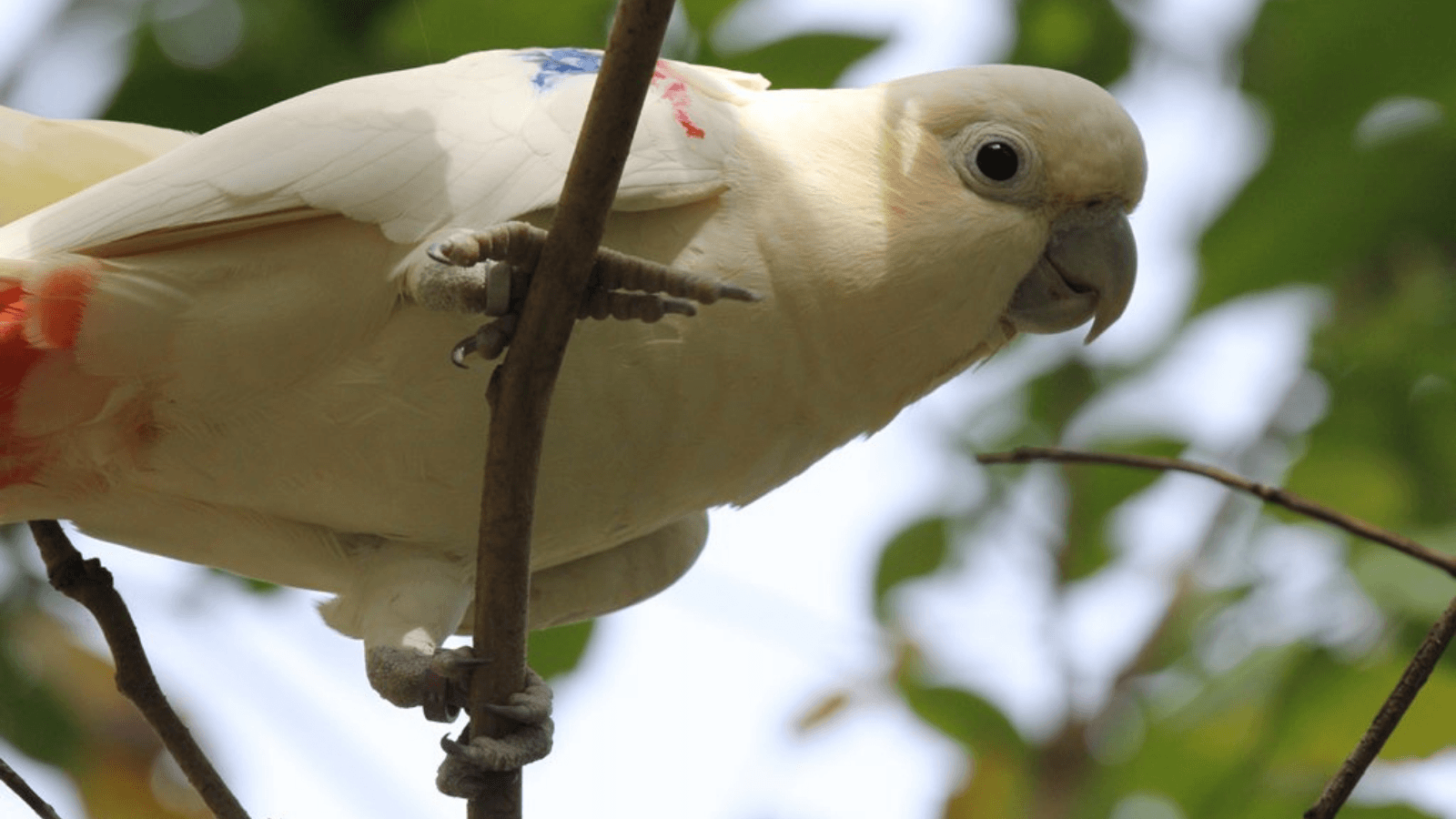
Known for their ability to mimic humans, the Philippine cockatoo can talk, sing, and even dance, making these intelligent and beautiful parrots a much sought-after pet. However, poaching, together with habitat loss, are driving the species to the brink of extinction.
With a once-thriving population over the Philippine archipelago, their numbers have dropped by a staggering 80% over the last 40 years.
Today, they are extinct in much of their range with the island of Palawan now being the last stronghold of this parrot.
This is where CLP alumna, Indira Lacerna-Widmann, comes in. Co-founder and Chief Operations Officer of the Katala Foundation, she is working hard to protect the species.
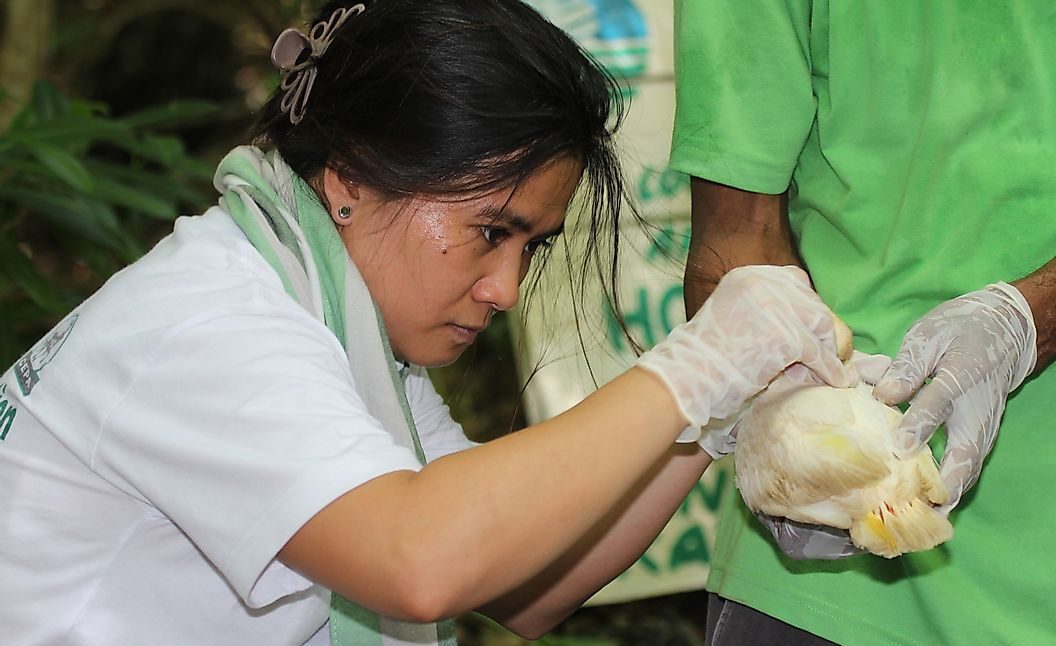
Building a brighter future for people and parrots
Indira, who is from the Philippines, started working on the conservation of the cockatoos (known locally as Katala) in 1998.
However, her interest and skills in nature and wildlife began at a much younger age. As she explains to me, nature and being outdoors has always held a special place in her heart. “My parents encouraged me to explore the outside world and taught me many skills which are invaluable to me today,” she remembers. Besides swimming, playing outside and learning about nature and animals, a key skill she learnt from her father was the ability to engage with others. “I never realised that the people management skills he taught me would come in extremely handy in the future,” she tells me.
And from her mother she learnt determination and to aim high. Values that help her in her conservation work to this day.
Another key influence in her life is her life partner, Peter Widmann, a wildlife biologist. “He introduced me to the Philippine cockatoos and has always encouraged me,” she says. It was together with Peter that Katala Foundation was founded.
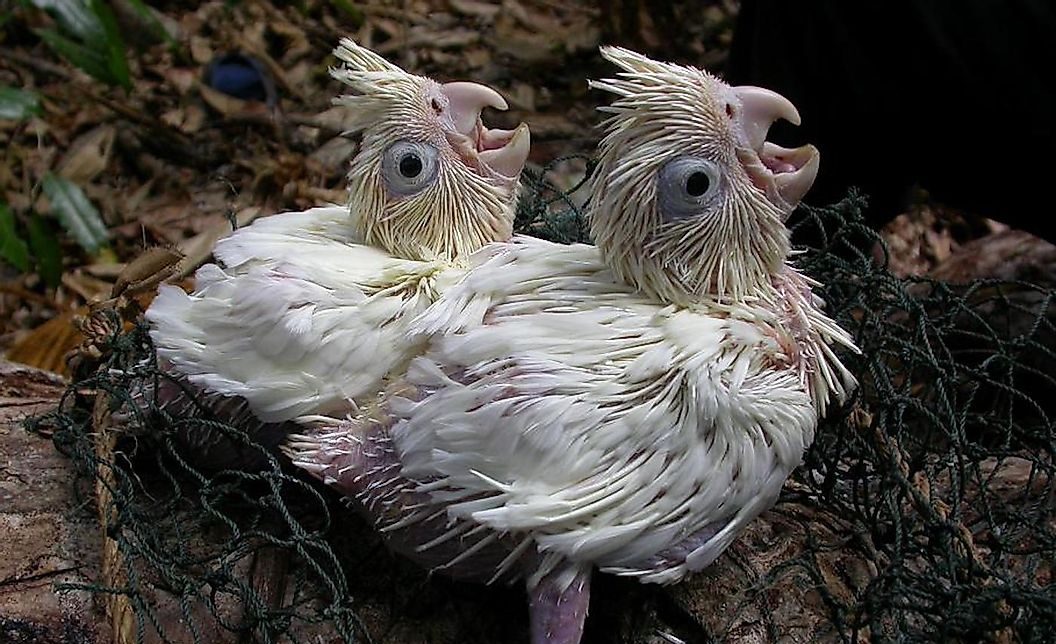
The Katala Foundation – Conserving with people
The initial work of Katala Foundation in Dumaran, Palawan was enabled by funding from the Conservation Leadership Programme (CLP). This initial work provided confirmation of the Philippine cockatoo population in Northern Palawan, which gave the team enough evidence to convince the local municipality to declare certain areas as protected critical habitat. A key early step in the conservation journey.
I asked Indira how they hope to save this beautiful species from extinction. “We do this through many ways such as engaging local communities and decision makers to help secure long-term conservation projects, to education and to building pride in these amazing animals, so we can change behaviours.”
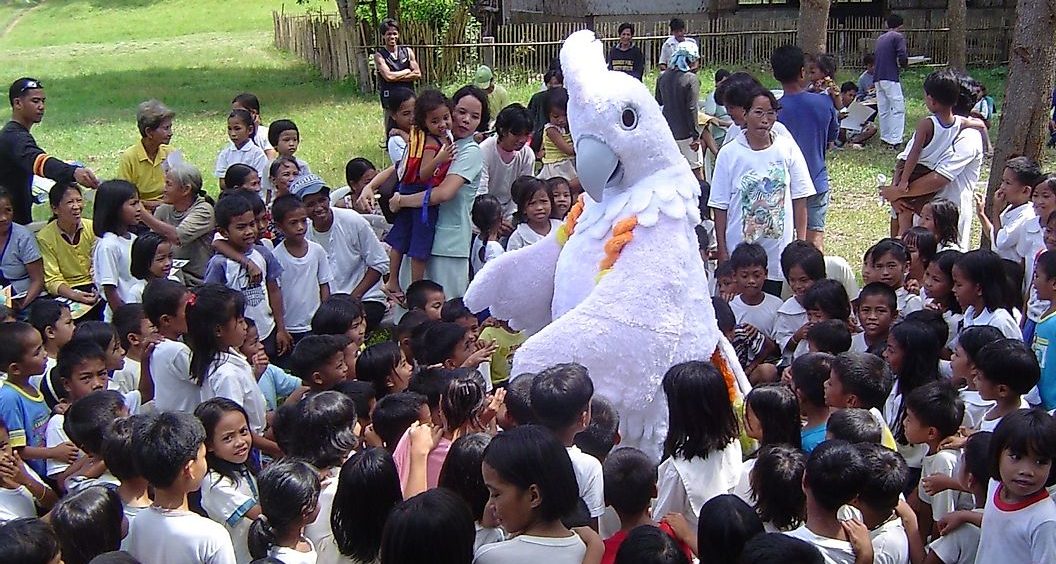
But that is the tip of the iceberg at this dedicated foundation. Their conservation program includes nest protection, identification, protection and management of key conservation sites, habitat restoration, conservation education, community involvement, rescue of individual birds, translocation, and conservation breeding for later re-introduction.
Building connections
Indira explains that the benefits of conservation go beyond the individual animals. Which is something she often explains to local people who don’t understand the connection between wildlife, habitats, and people. And is difficult to explain to someone who’s livelihood is at stake. Which has led to many tough questions from locals, such as: “What is more important for you? The Philippine cockatoo or our empty stomachs?”
Her resilient response has been to help people to understand the benefits of protecting nature. “I explain to them, that when you protect the habitat, it’s not only a benefit for the cockatoo, but it also benefits us. So, when you protect the forest, you have a water supply all year round where you don’t worry about droughts. When you protect the mangrove, which is the breeding and the foraging ground of the Philippine cockatoo, you will encourage fish to spawn there.”
And does it work? Yes, as she explains and it’s a huge motivation that keeps her going. “If even a small number of people are touched by what I say, then that’s a great feeling. And when they say thank you to you, genuinely because now they understand, then that for me is really very important. Sometimes they might give you a fish, to say thank you. It’s those simple gestures of genuine care that really move me. And it’s a reinforcement that motivates me that maybe I can do more to help.”
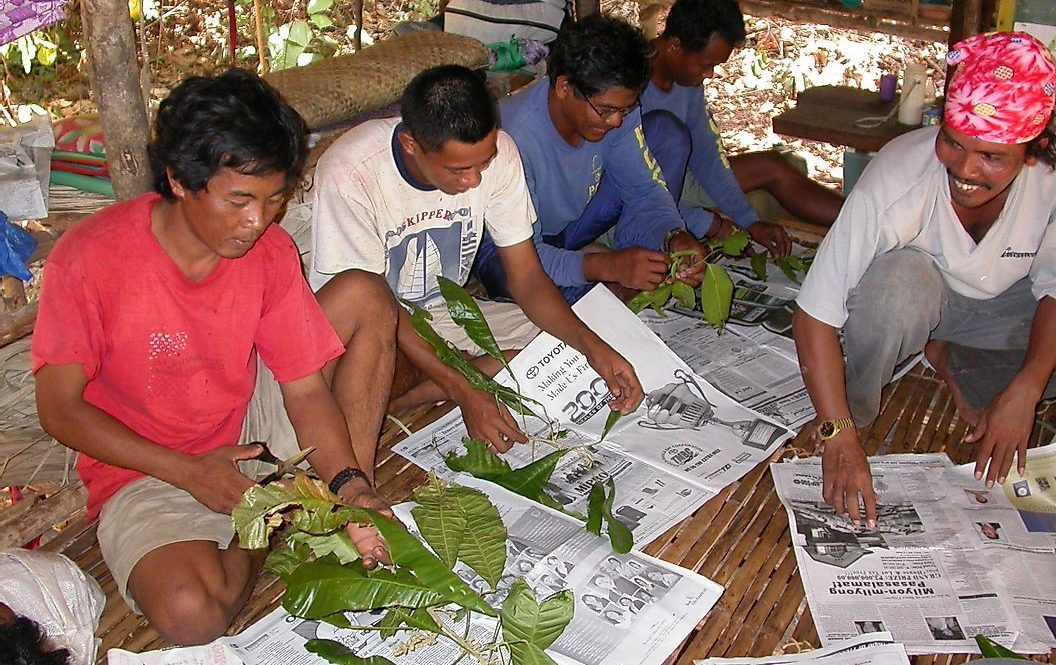
Transforming lives
With so many ambitions the team have secured the help of some unlikely allies – prisoners, ex-convicts, and even ex-poachers.
The team saw the potential of support from convicts as they are allowed to walk through forests that surround the penal colony. Forests where the cockatoos’ nest and breed. The convicts record details on the cockatoos and help with a plant nursery as part of the habitat restoration program. Not only does this help the project, but it also provides meaningful work for these people.
Poachers turned protectors
The team have also enlisted the help of former poachers. These are often indigenous people and members of marginalised sectors of the community, who poach the hatchlings in exchange for medicine or food. They have excellent climbing skills which they now use in preserving the cockatoos.
And as Indira explains this provides big advantages. Poaching is territorial, with some poachers carving their names on the nest trees, to deter others from touching it. “When these poachers are changed, it means the next season you have removed that threat already.”
With poachers now protecting and patrolling the areas they once poached from, it helps not only the cockatoos but also the former poachers as it provides income and boosts their morale. “Before they were afraid of facing anybody because they were illegal perpetrators, but now people are listening to their stories with huge interest,” says Indira proudly.
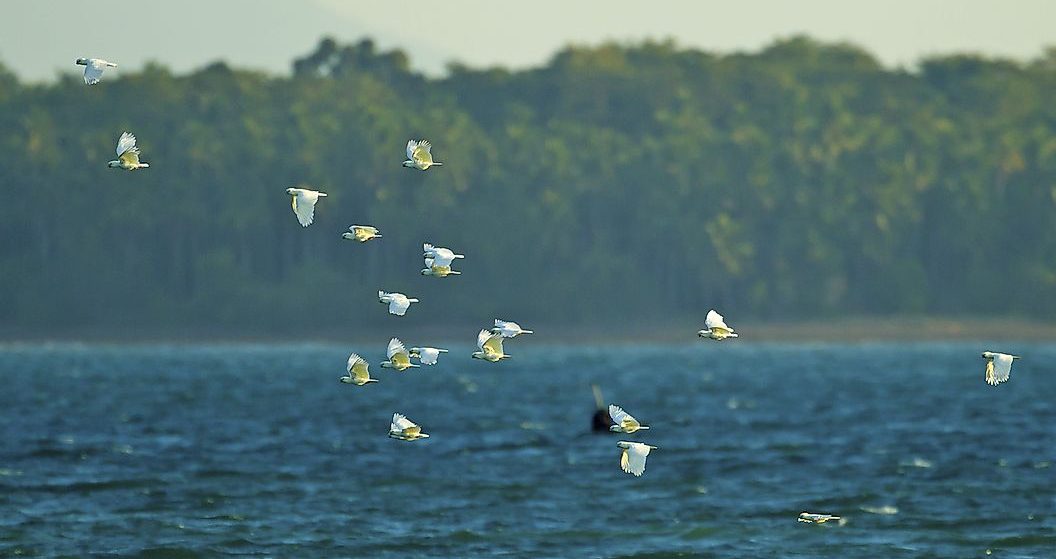
Challenges in building a safe haven
It’s clear the dedicated team are making progress in their work, but it’s not without its significant challenges. They work in remote areas which can be volatile and require police or military escort. And sometimes that protection is not possible which increases their costs. And like many other countries’ conservation is not always a top priority with local governments or officials which also impedes their ability to be effective. On top of this, Covid has also brought its challenges, not only as a health risk to those involved but it has also impacted funding from their donors who are suffering financially.
Pride and hope for their future
But through all the obstacles, Indira and the team keep hope that their work will save the Philippine cockatoo. And even after working in this field for twenty years, her sense of purpose at helping these special animals hasn’t faded. “Rescuing cockatoos, putting leg bands on a new batch of hatchlings every year fills me with pride and gives me hope for their future. And that still makes me cry,” she admits.
“But these are the best moments. And then when you receive reports that they have fledged successfully, left the nest, and have joined others at the roosting site. Where you can see them with their leg bands, that’s really fulfilling,” she beams.
“And it’s not only me who values these real achievements but also our committed donors and sponsors too,” she adds.
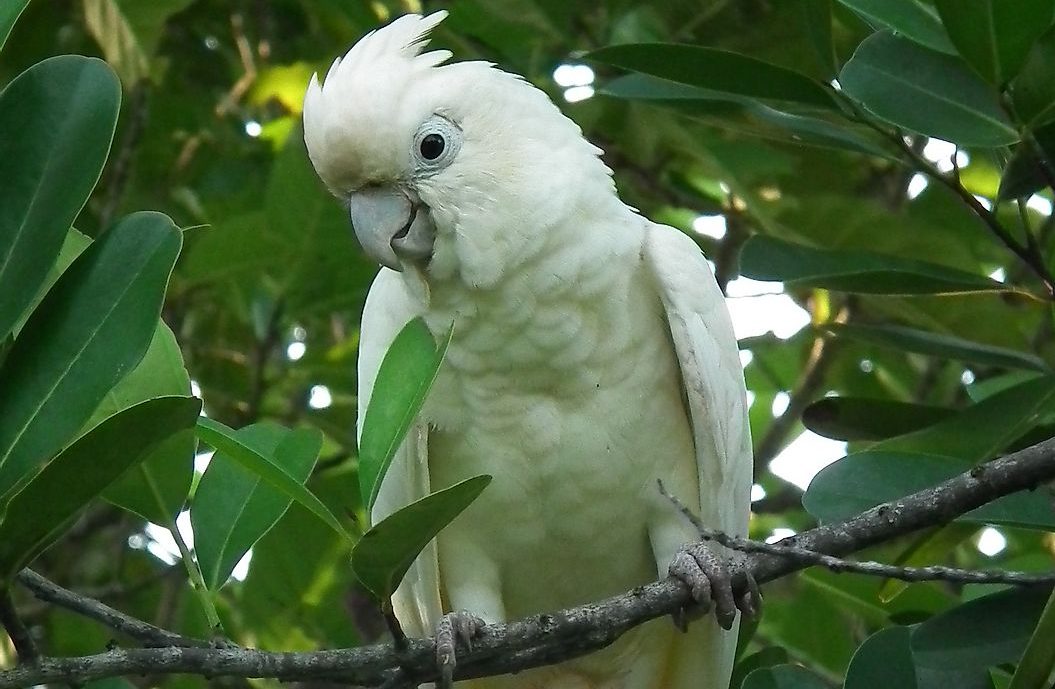
Find out more
To find out more about this inspiring project and how the team also aim to protect other animals such as the Palawan Forest Turtle, Palawan Pangolin, Calamian Deer and Balabac Mouse-deer, visit the Katala Foundation website and the foundation’s Facebook page, and read the Conservation Leadership Programme (CLP) report.
The work of the Katala Foundation is enabled by consistent and committed donors and partners: Municipalities of Narra and Dumaran, Palawan, Loro Parque Fundación (LPF). The Department of Environment and Natural Resources and Palawan Council for Sustainable Development. North of England Zoological Society/Zoological Gardens Chester, Zoologische Gesellschaft für Arten- und Populationsschutz (ZGAP, incl. Fonds für Bedrohte Papageien and Strunden-Papageien-Stiftung), ZooParc de Beauval and Conservation Association (Association Beauval Conservation et Recherche), Mandai Nature, Zoo Landau in der Pfalz, the Stadtholding Landau in der Pfalz and Freizeitbad La Ola, Fondation Segre, Cockatoo Downs, Parrots International, Marion Packer Trust, Municipality of Balabac and Iwahig Prison and Penal Farm.
This interview was originally published on the Conservation Careers website, which can be found here.
About the author
Marie Conroy is a communications professional from Ireland. She is a keen traveller, loves sailing and exploring the natural world, taking lots of wildlife photos along the way. Her dream is to enable conservation projects by combining her skills in communications and passion for writing, with her lifelong love for nature.
Feeling inspired?
If Indira's story leaves you feeling inspired, then why not apply for one of our Team Awards? You could gain funding for your conservation projects, access to mentorship and professional training, as well as opportunities to build connections with other conservationists around the world. The call for applications is announced in July each year. Find out more about our awards and other projects we have supported in the past.




